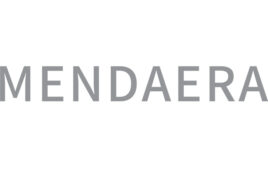
[Image from TE Connectivity]
The TE filters are part of the company’s Corcom products that are highly-engineered, sales assemblies of electrical filtering components. They are designed to eliminate unwanted electrical magnetic interference. Using the new filters in LED lighting in MRI rooms, room light manufacturers are able to offer high-efficiency, patient-centric lighting while reducing electrical interference risk to MRI equipment functionality.
“The filters are compatible with 40V, 3A drivers and are an excellent choice for high-noise drivers and their compact size supports OEM’s and installers in their drive to minimize the size and weight of their equipment,” Jose Diaz, global product manager at TE Connectivity, said in a press release. “The assemblies are soldered and fully shielded to protect the filters against radiated noise. The unit comes with a high quality steel mesh guard on the insert pipe that protects the MRI room from external radiated noise and EZ connect terminals for fast set-up and install. These products will be sold through TE’s extensive distribution network making it easy for industrial and lighting designers, installers and facility managers to purchase this product. The options we offer provide solutions for many situations and price sensibilities.”
MRI room equipment has to meet electrical noise requirements as there can be interference with superconducting magnets in MRI equipment which could cause incorrect or flawed data. The electrical equipment within the MRI room needs to be supplied with “clean” power. LED lighting is usually preferred in the MRI room because of its cost, operation and aesthetic benefits.
Drivers can power light fixtures. Through its pulse width modulated outputs, the drivers could introduce EMI interference in the MRI room. TE Connectivity’s new MRI LED filters can be installed outside of the shielded MRI rooms to clean the electrical power that happens in the drivers before it gets into the MRI room.
The filter’s design can attenuate noise in bandpass frequencies between 10 KHz and 1GHz. It also uses a three-stage bandpass circuit to bring insertion loss down to -100dB.
TE Connectivity’s filters can be retrofitted to existing equipment and comes in two, three and four channel versions. Contractors also have flexibility to choose the correct number of filters for each installation.




